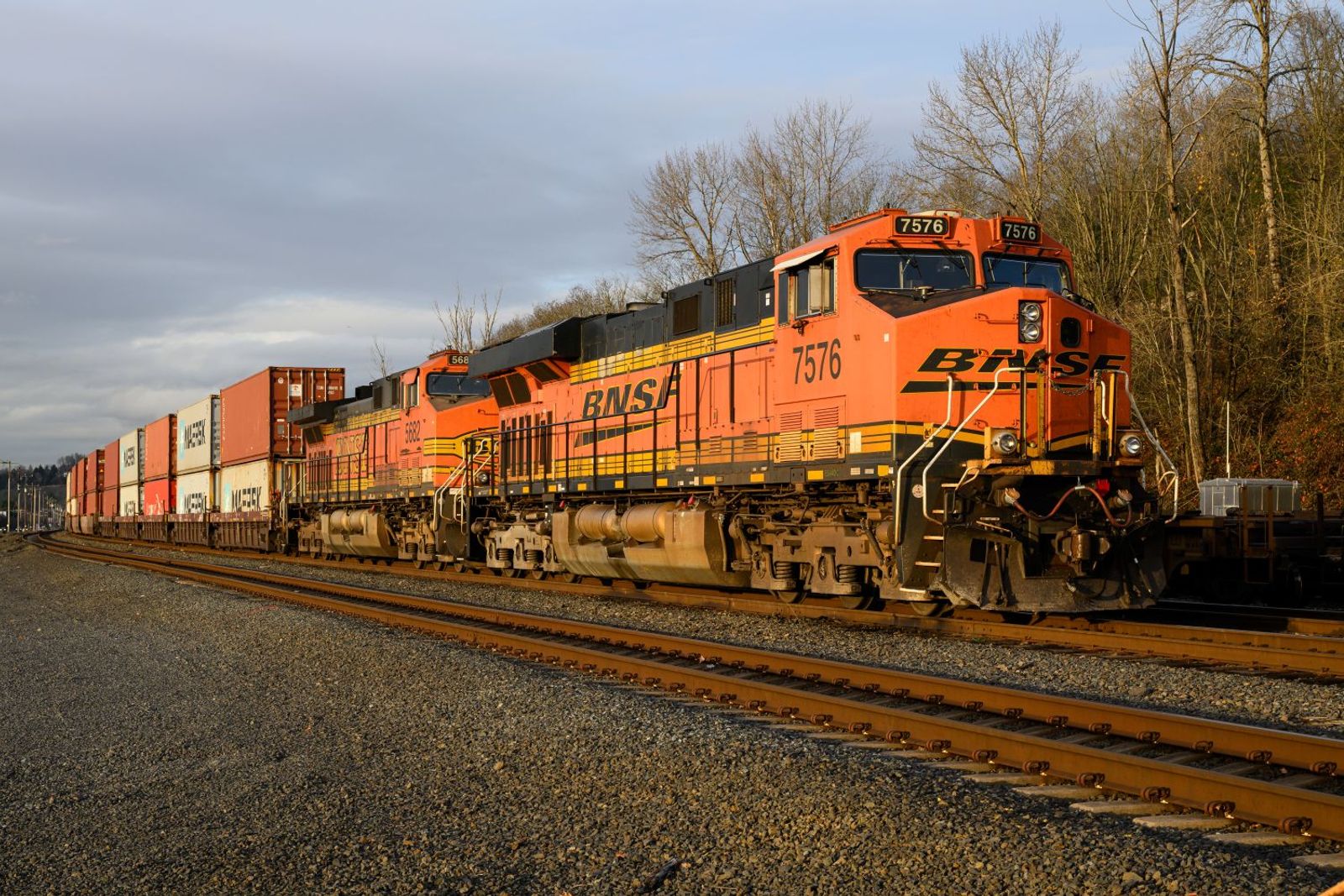
BNSF Railway will launch a faster international intermodal service linking the ports of Seattle and Tacoma to Chicago and points east with Norfolk Southern (NS), the two railroads announced along with the Northwest Seaport Alliance.
Transit times from dock to Chicago will be reduced to six days from nine and include a streamlined handoff to a Norfolk Southern crew at Chicago for service on the same train to inland markets in the Midwest and Northeast.
“This service product collaboration was an outcome of listening to our joint customers, who emphasized the desire to use more rail but would need to also reduce inventory carrying and total landed transportation costs out of their networks in 2025,”Jon Gabriel, BNSF's group vice president of consumer products, said in a statement Wednesday.
The faster service will require terminals within the Northwest Seaport Alliance to load rail-bound trains within 48 hours of vessel arrival, significantly faster than the average dwell times of eight to 15 days experienced last year during a surge in container volumes.
The NWSA credited enhanced coordination with BNSF, including improved data sharing that gives railroads better visibility into container volumes and destinations, and gives terminal operators more reliable forecasts of railcar supply.
BNSF cited a combination of infrastructure and network changes that made the faster transit possible. That includes the completion of a second mainline bridge over Lake Pend Oreille in Sandpoint, Idaho in 2024, improving fluidity across the Northern Transcon.
Between June and August 2024, however, the average rail dwell time at Tacoma's Washington United and Husky terminals climbed to between eight and 10 days, according to data from Opentrac. When cargo was diverted to Seattle, average dwell times between the two ports stretched as long as 15 days in August and September.
That backlog came during a spike in international intermodal volumes. About 100,000 import loads moved by rail from Seattle-Tacoma to Chicago on BNSF or Union Pacific trains in 2024, up from approximately 60,000 the previous year, according to Journal of Commerce estimates. It was the highest annual throughput since the pandemic-related freight surge in 2021.
Hoping to cut inland delays
The new service is also meant to reduce delays in Chicago. Rather than delivering trains to a BNSF terminal and relying on the Belt Railway of Chicago (BRC) to transfer containers to Norfolk Southern, as is typical for all Chicago interchanges, all traffic will be routed directly to Norfolk Southern's Ashland Yard on the city's south side. From there, the only step will be a change to an NS crew before continuing east with the same train. There will be no stop in a BNSF terminal, no haul between railroads by the BRC, and no building of a separate train inside an NS terminal.
The process of western railroads separating blocks of containers, employing the BRC to haul them between terminals, and eastern railroads building new trains adds 24 to 48 hours to transit times.
“By collaborating with BNSF and the Northwest Seaport Alliance, we're offering a faster, more reliable rail option that helps shippers reduce transit time, cut costs, and streamline supply chains...,”Shawn Tureman, NS'vice president of intermodal and automotive marketing, said in the statement.
Nearly 50,000 imports to Seattle and Tacoma interchange between western and eastern US railroads annually, the majority bound for destinations such as Cleveland, Columbus and Detroit, according to Journal of Commerce estimates.
Reducing transit times to those markets could help West Coast ports regain ground lost to East Coast gateways such as the Port of New York and New Jersey and the Port of Virginia, which together move an estimated 300,000 to 400,000 ocean containers annually to inland hubs in the Midwest.
The collaboration comes as pressure builds to retain West Coast market share following the resolution of labor tensions on the East Coast that had resulted in some discretionary cargo being diverted to the West Coast. Shippers will now weigh the service improvements against their past experiences when deciding how to route freight inland in the months ahead.

